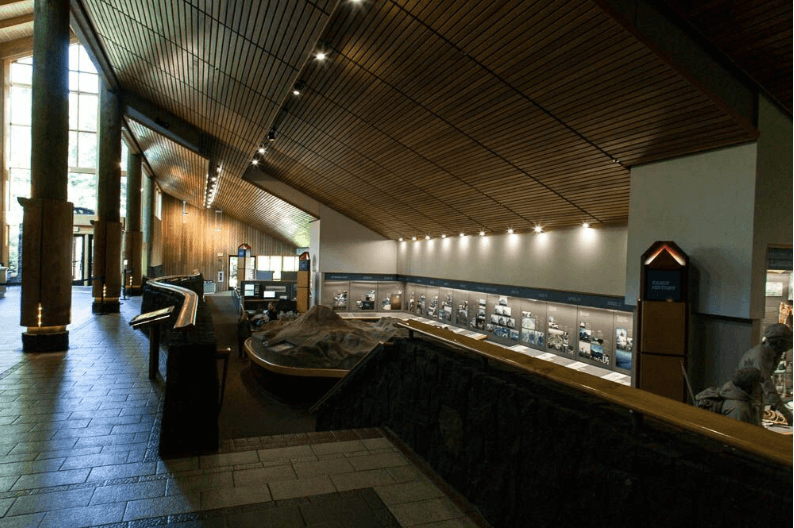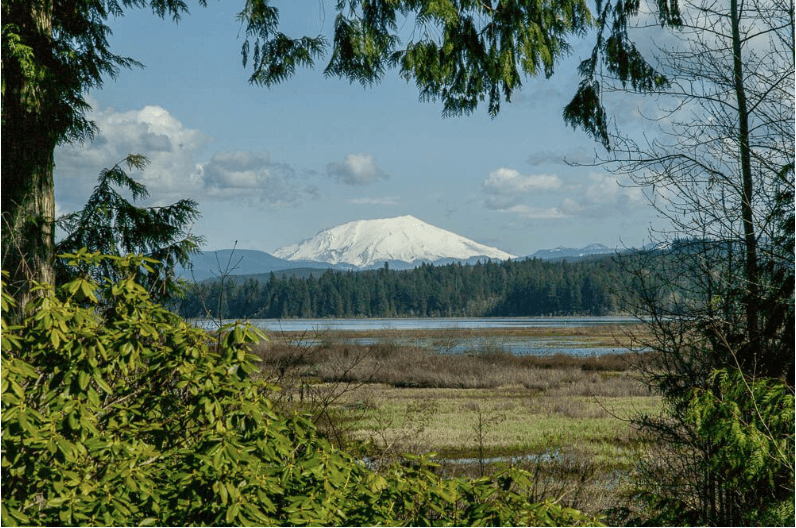Rebirth of a Forest
Most folks who remember the eruption of Mount Saint Helens in 1980 remember the monochrome photos of devastation; trees tossed like matchsticks and coated with gray ash, looking more like the surface of the Moon than the lush forests that lived on the mountain previously.
Visiting The Mount Saint Helens Forest Learning Center
Forests have returned to the mountain through the tireless efforts of scientists, students, and crews led by Weyerhaeuser foresters. Now you can find groves of trees almost everywhere you look around the mountain, with the exception being the mountain itself and the area set aside for the National Volcanic Monument.


Change of Scenery
The Forest Learning Center is the next major visitor center as you make your way to Mount Saint Helens along highway 504 after leaving the Visitor Center I wrote about previously. By the time you reach the Forest Learning Center, you’ve climbed to more than 2,000 feet in elevation and driven through some amazing vistas.
One of the things that bothered me as I drove, honestly, was that the forests looked, well, odd. I’m used to seeing natural forests where the trees grow to different heights based on species and age. But the stands of timber around the Learning Center are crops planted by Weyerhaeuser after the eruption, and the heights tend to be exactly the same. Add to that the uniformity of the tree species, and you have the makings of a different vantage point.
I commented on this to the gentleman at the sign-in desk for the Forest Learning Center, a retired forester from Weyerhaeuser, and he explained the reasons behind that. Up to that time, I’d believed all those trees were replanted by the National Forest Service, but here I learned that we were driving through crop trees planted and managed by the timber giant.
He also explained that the company’s main cash crop was Douglas Fir, which grows best when it isn’t being shaded by other trees. This was the reason for the uniform height of those trees.


The Forest Learning Center’s purpose is to educate visitors on how forests work, how they are managed, and the special challenges they’d faced when cleaning up after the major eruption and then replanting. I walked in thinking that I knew a fair amount about forests after spending much of my life in Western Washington, but as I walked through the center I found myself learning quite a bit. Kids will benefit from the experience, and there is even a room set aside for them to get hands-on with different activities.
Rebuilding
When foresters began trying to replant the forest around the mountain, they had to first determine how to get the seedlings to grow in the volcanic ash. They quickly learned that the ash didn’t contain enough nutrients for the seedlings, and the water ran off too quickly. They found that they had to dig (by hand) down into the soil beneath the ash to plant the seedlings, and then create channels for the water to get to the young trees without standing too long and drowning them. I found this to be evidence of the enormous commitment these people have to the success of their forests.


Nest fascinating tidbit was the so-called Zone of Silence around the mountain during the eruption. I had not heard before that the people closest to Mount Saint Helens when it erupted didn’t hear the boom. They felt the rumbling of the ground and rushed out to see the huge cloud of ash rising, but never heard the explosion. There is an exhibit that explains how this happened, and first-hand accounts of some of those survivors.
The Mount Saint Helens Forest Learning Center is located at milepost 33 on highway 504. Visit the website at http://www.mountsthelens.com/Forest-Learning-Center.html for hours and more information.







